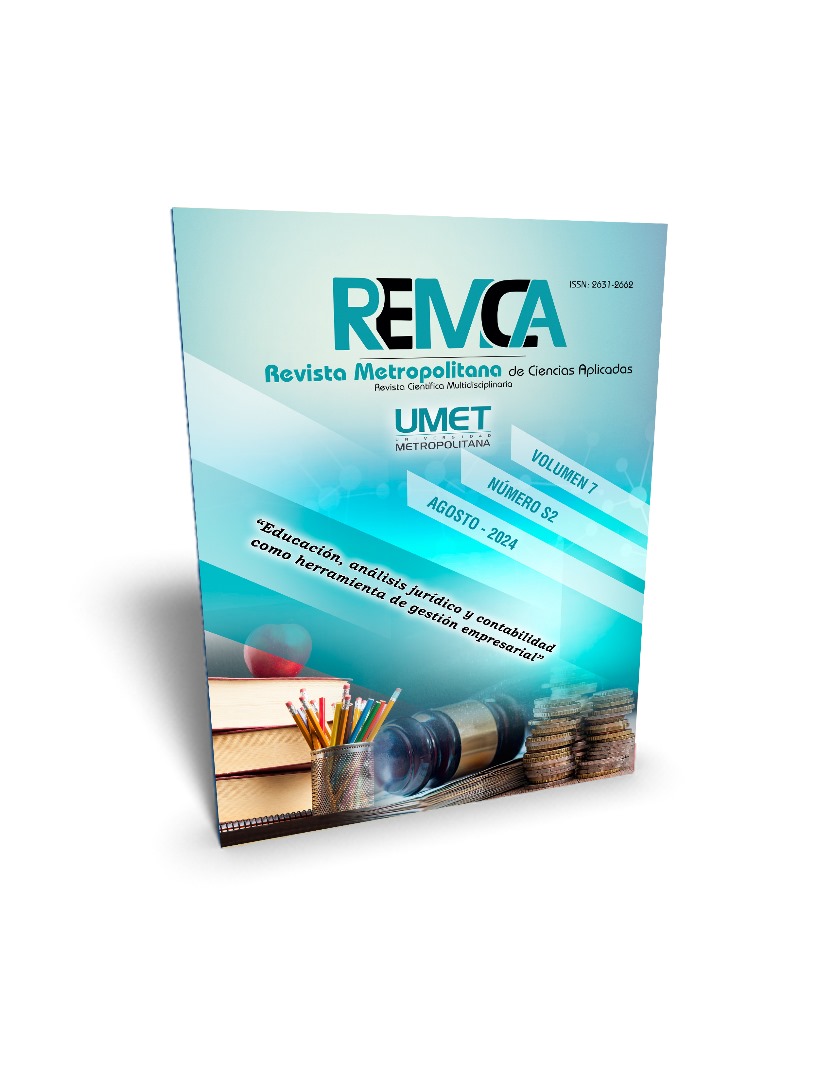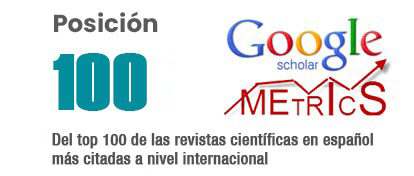Genially as a teaching resource for teaching Chemistry. An experience with high school students
DOI:
https://doi.org/10.62452/g38zv815Keywords:
Active learning, Genially, educational innovation, critical thinking, educational technologyAbstract
The use of educational technology, such as the Genially platform, is increasingly becoming relevant in chemistry teaching. The adaptation to virtual environments and the implementation of digital resources have been essential to maintain educational quality. The objective of the research is to apply Genially as a teaching resource for teaching Chemistry to First Year Baccalaureate students of the Javier Loyola Educational Unit 2023-2024, the research follows a mixed longitudinal cohort epistemological approach, data collection is carried out through a structured test, the results show that Genially stands out for converting theoretical concepts into practical experiences, motivating students and promoting participatory and dynamic learning, an improvement in information retention and the creation of a dynamic educational environment is also evident. Finally, the use of Genially is presented as an opportunity to personalize learning, increase student engagement and strengthen the teaching-learning process at the high school level.
Downloads
References
Albán-Romero, L., Mendoza-Jara, M., López-Fernández, R., & Tapia-Bastidas, T. (2023). Digital didactic resources in face-to-face settings: challenges in good teaching practices Recursos didáticos digitais na presencialidade: desafios nas boas prácticas docentes. MENDIVE, 21(4), 1815–7696. https://mendive.upr.edu.cu/index.php/MendiveUPR/article/download/3632/3107?inline=1
Ayón-Parrales, E. B., & y Cevallos-Cedeño, Á. M. (2020). Virtuality in educational training processes. Challenges and opportunities of the Ecuadorian educational system. Polo Del Conocimiento, 5, 860–886. https://doi.org/10.23857/pc.v5i8.1629
Barrera-Narváez, P. N., & Cabrera-Berrezueta, L. B. (2022). Tecnología y motivación dentro del proceso de aprendizaje en el bachillerato intercultural bilingüe. MQRinvestigar, 6(3), 1686–1711. https://doi.org/10.56048/mqr20225.6.3.2022.1686-1711
Calle-Álvarez, G. Y., & y Ocampo-Zapata, D. A. (2022). Prácticas educativas mediadas por tecnologías digitales en la universidad colombiana. Análisis, 54(101), 2145–9169. https://dialnet.unirioja.es/descarga/articulo/9086088.pdf
Díaz-García, A. K., González-Herrera, S., Santiago-Roque, I., Hernández-Lozano, M., & y Soto-Ojeda, G. Arturo. (2022). Gamificación a través del uso de la aplicación Genially para innovar procesos de aprendizaje en la Educación Superior. Eduscientia. Divulgación de La Ciencia Educativa, 5(10), 2594–1828. https://eduscientia.com/index.php/journal/article/view/197
Enríquez-Silva, M. (2020). Características de las herramientas multimedia para el desarrollo de Presentaciones Interactivas. Journal of science and research, 5, 2528–8083. https://dialnet.unirioja.es/descarga/articulo/7723208.pdf
Eukel, H., & Morrell, B. (2021). Ensuring Educational Escape-Room Success: The Process of Designing, Piloting, Evaluating, Redesigning, and Re-Evaluating Educational Escape Rooms. Simulation and Gaming, 52(1), 18–23. https://doi.org/10.1177/1046878120953453
Gómez, K. (2019). El desafío de las nuevas tecnologías: el uso del aula virtual y su influencia en el rendimiento académico. ReHuSo: Revista de Ciencias Humanísticas y Sociales, 4(3), 48–56. https://dialnet.unirioja.es/descarga/articulo/7047174.pdf
Gortaire-Díaz, D., Beltrán-Moreno, M., Mora-Herrera, E., Reasco-Garzón, B., & Rodríguez-Torres, M. (2023). Constructivismo y conectivismo como métodos de enseñanza y aprendizaje en la educación universitaria actual. Ciencia Latina Revista Científica Multidisciplinar, 6(6), 14046–14058. https://doi.org/10.37811/cl_rcm.v7i1.4672
Manyari Del Carpio, S. E., Vargas-Manyari, J. H., & Cruz-Oyola, I. E. (2023). Recursos digitales favorecen el proceso de enseñanza y aprendizaje en tiempos de pandemia. Horizontes. Revista de Investigación En Ciencias de La Educación, 7(27), 397–402. https://doi.org/10.33996/revistahorizontes.v7i27.524
Martínez-Serrano, M. C. (2019). Perception of the integration and use of information and communication technologies (ICT). Study about teachers and students of primary education. Información Tecnología, 30(1), 237–246. https://doi.org/10.4067/S0718-07642019000100237
Méndez-Carpio, C. R., & Pozo-Cabrera, E. E. (2021). La tecnopedagogía: enlace crucial entre metodologías activas y herramientas digitales en la educación híbrida universitaria. Revista Scientific, 6(22), 248–269. https://doi.org/10.29394/scientific.issn.2542-2987.2021.6.22.13.248-269
Molinero-Bárcenas, M. C., & Chávez-Morales, U. (2019). Herramientas tecnológicas en el proceso de enseñanza-aprendizaje en estudiantes de educación superior. RIDE Revista Iberoamericana Para La Investigación y El Desarrollo Educativo, 10(19). https://doi.org/10.23913/ride.v10i19.494
Morán-Reyes, A. (2022). Digital Epistemology as a Bridge between Digital Literacy and the Right to Information. Investigación Bibliotecológica, 36(91), 193–206. https://doi.org/10.22201/iibi.24488321xe.2022.91.58579
Ponce-Sacoto, D. H., & Ochoa-Encalada, S. C. (2021). Genial.ly como estrategia de aprendizaje en estudiantes de educación General Básica. Revista Arbitrada Interdisciplinaria Koinonía, 6(4), 136. https://doi.org/10.35381/r.k.v6i4.1495
Pozo-Sánchez, S., Lampropoulos, G., & López-Belmonte, J. (2022). Comparing Gamification Models in Higher Education Using Face-to-Face and Virtual Escape Rooms. Journal of New Approaches in Educational Research, 11(2), 307–322. https://doi.org/10.7821/naer.2022.7.1025
Tapia-Machuca, R. L., García-Herrera, D. G., Cárdenas-Cordero, N. M., & Erazo-Álvarez, J. C. (2020). Genially como una herramienta didáctica para desarrollar la redacción creativa en estudiantes de bachillerato. CIENCIAMATRIA, 6(3), 29–48. https://doi.org/10.35381/cm.v6i3.389
Downloads
Published
Issue
Section
License
Copyright (c) 2024 Lina Marlene Ochoa-Vicuña, Santiago Arturo Moscoso-Bernal (Autor/a)

This work is licensed under a Creative Commons Attribution-NonCommercial-ShareAlike 4.0 International License.
Authors who publish in Revista Metropolitana de Ciencias Aplicadas (REMCA), agree to the following terms:
1. Copyright
Authors retain unrestricted copyright to their work. Authors grant the journal the right of first publication. To this end, they assign the journal non-exclusive exploitation rights (reproduction, distribution, public communication, and transformation). Authors may enter into additional agreements for the non-exclusive distribution of the version of the work published in the journal, provided that acknowledgment of its initial publication in this journal is given.
© The authors.
2. License
The articles are published in the journal under the Creative Commons Attribution-NonCommercial-ShareAlike 4.0 International License (CC BY-NC-SA 4.0). The terms can be found at: https://creativecommons.org/licenses/by-nc-sa/4.0/deed.en
This license allows:
- Sharing: Copying and redistributing the material in any medium or format.
- Adapting: Remixing, transforming, and building upon the material.
Under the following terms:
- Attribution: You must give appropriate credit, provide a link to the license, and indicate if any changes were made. You may do this in any reasonable manner, but not in any way that suggests the licensor endorses or sponsors your use.
- NonCommercial: You may not use the material for commercial purposes.
- ShareAlike: If you remix, transform, or build upon the material, you must distribute your creation under the same license as the original work.
There are no additional restrictions. You may not apply legal terms or technological measures that legally restrict others from doing anything the license permits.




